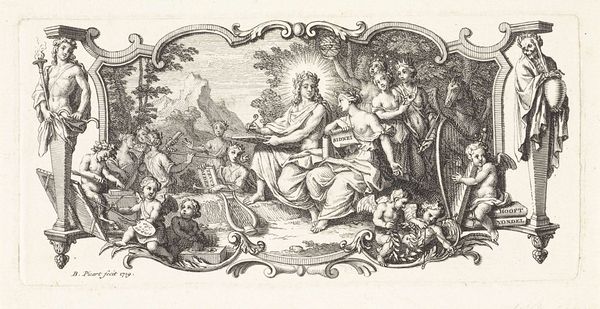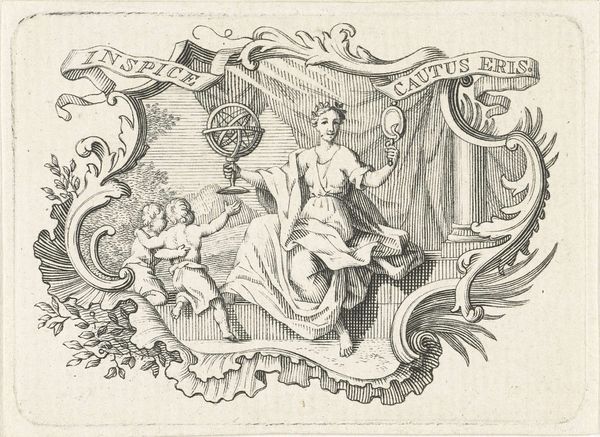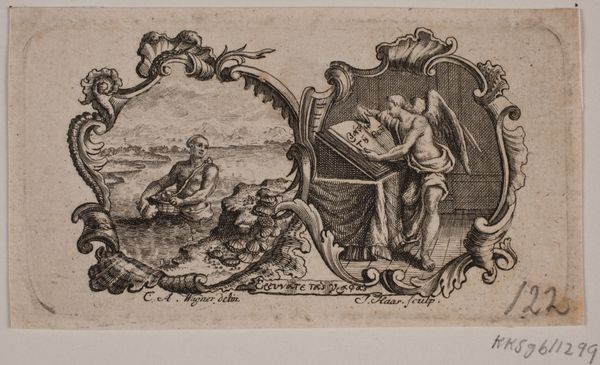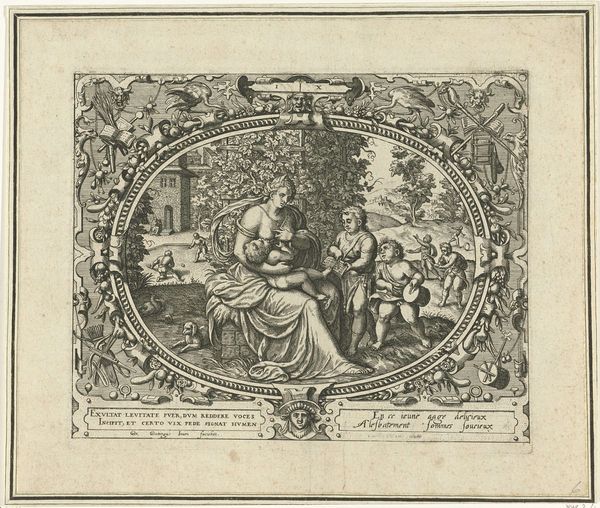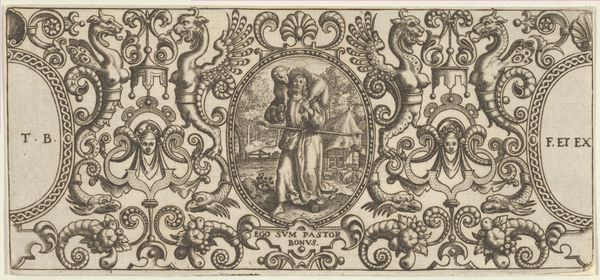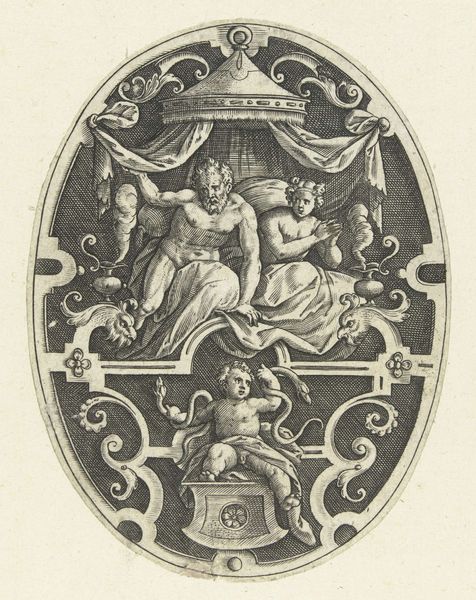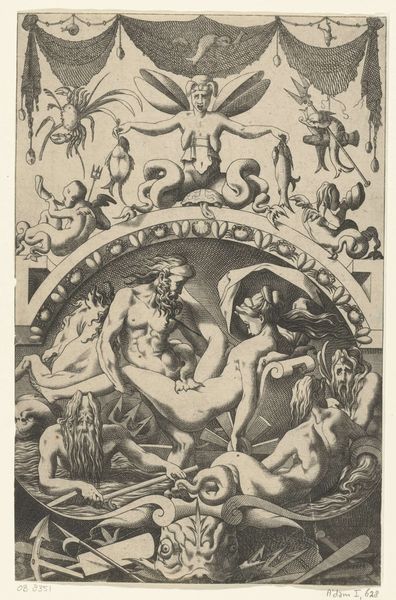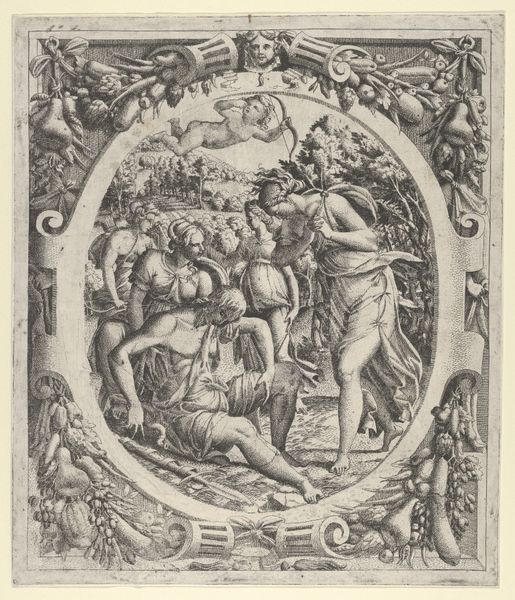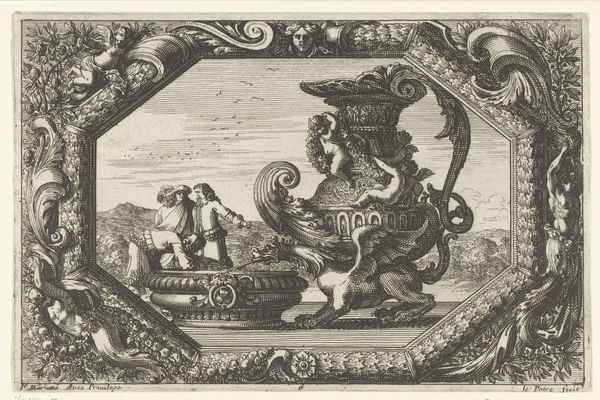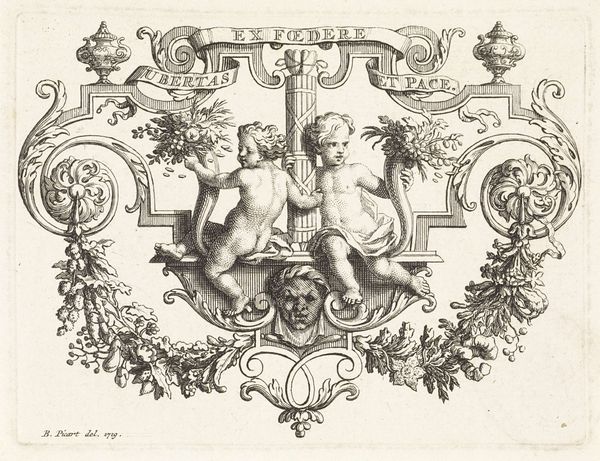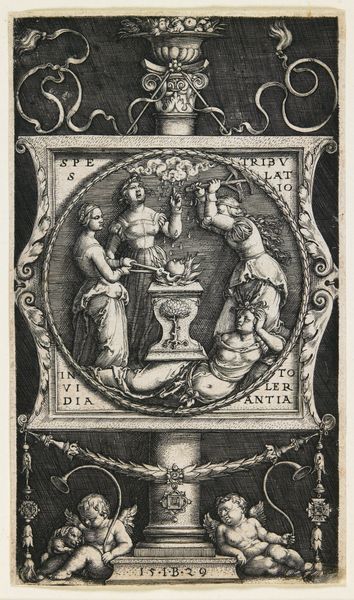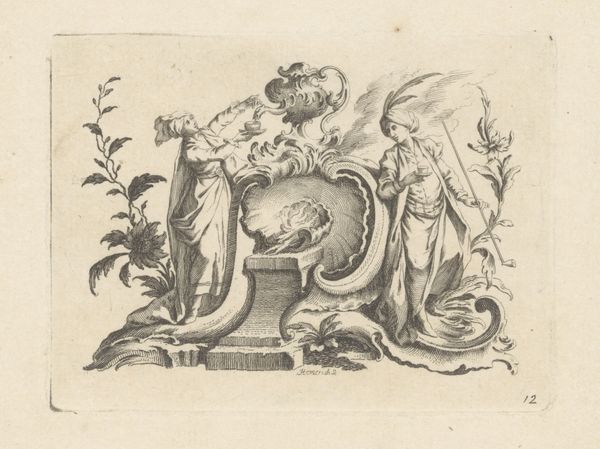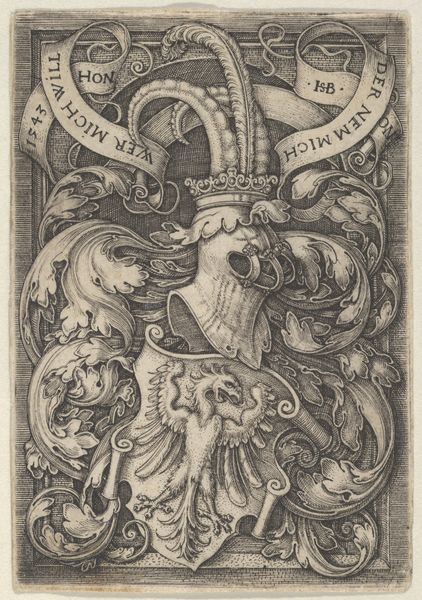
Titelvignet met Orpheus die met zijn lier wilde dieren lokt 1681 - 1746
0:00
0:00
engraving
#
baroque
#
pen drawing
#
pen illustration
#
pen sketch
#
landscape
#
figuration
#
history-painting
#
engraving
Dimensions: height 58 mm, width 88 mm
Copyright: Rijks Museum: Open Domain
Editor: We’re looking at "Titelvignet met Orpheus die met zijn lier wilde dieren lokt" by François van Bleyswijck, an engraving from around 1681-1746. The detail is amazing; I’m struck by the sheer labor involved in creating this intricate scene with just pen and ink. How do you read this piece, considering its materiality? Curator: For me, this engraving speaks volumes about the social context of printmaking. The reproductive nature of engravings made art accessible, fueling the burgeoning market for imagery. Think about the labour involved; the artisan, Bleyswijck, meticulously translating myth into reproducible form, catering to a demand for both artistry and narrative. Note the emphasis on Orpheus, but rendered for popular consumption, as both a decoration for carmina or as an illustration for poetry. Editor: So you’re saying its value lies not just in the artistry, but in its role as a commodity? How would this have been used and distributed at the time? Curator: Precisely. Consider the networks: the paper makers, the ink producers, the publishers, and the vendors. Engravings like these would be bound into books, disseminated through trade routes, adorning personal libraries, fueling dialogues about culture, about the classics. Did the ready availability change how Orpheus, the lyre player, and classical works more broadly were interpreted, absorbed and even used as signs of the consumer's status and personal cultivation? Editor: That makes sense. The fine lines feel almost like a form of mass production, but with this veneer of something quite detailed. It's interesting how it blurs the lines between art and… industry? Curator: It certainly does. By focusing on the ‘how’ and ‘why’ this piece was created, printed, and distributed, we gain insights into the economy of art production in the 17th and 18th centuries and this tells us a good deal about how ideas and information was moving in the early modern world. Editor: This has broadened my perception of prints and printmaking. I am no longer focused on subject only, but rather on the process. Curator: Indeed. The materiality of art offers such valuable perspectives on the past!
Comments
No comments
Be the first to comment and join the conversation on the ultimate creative platform.
